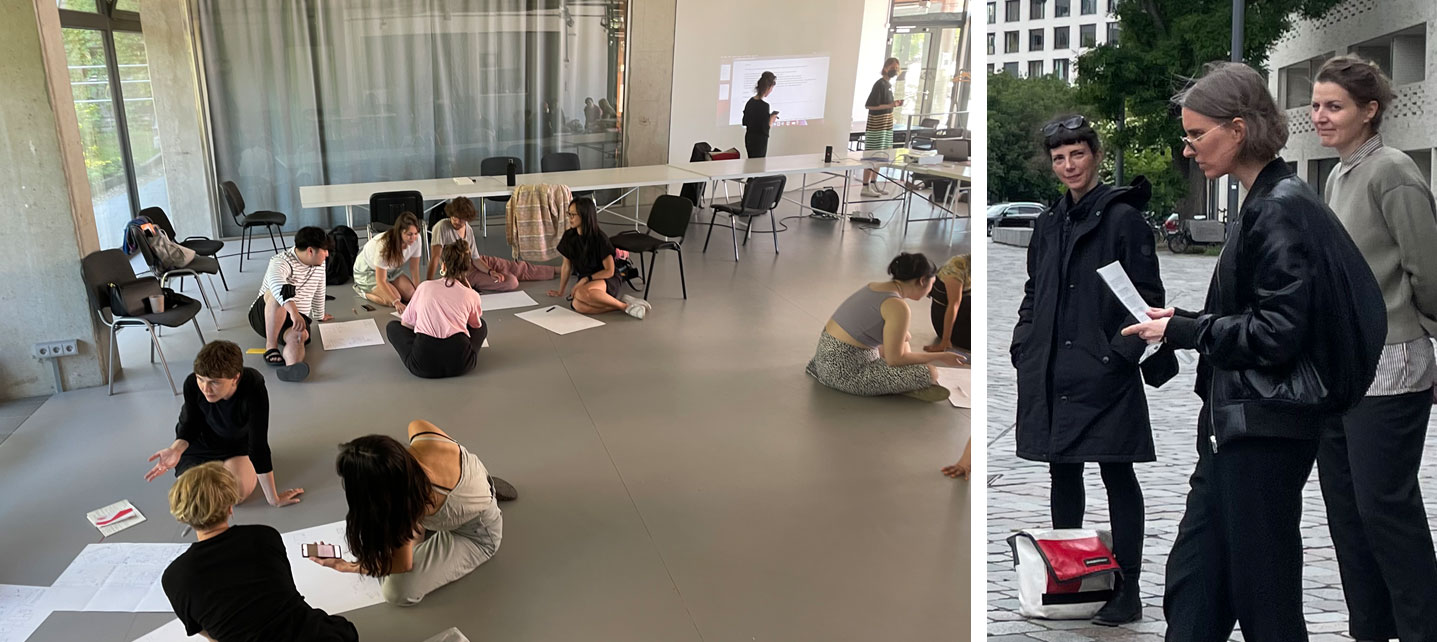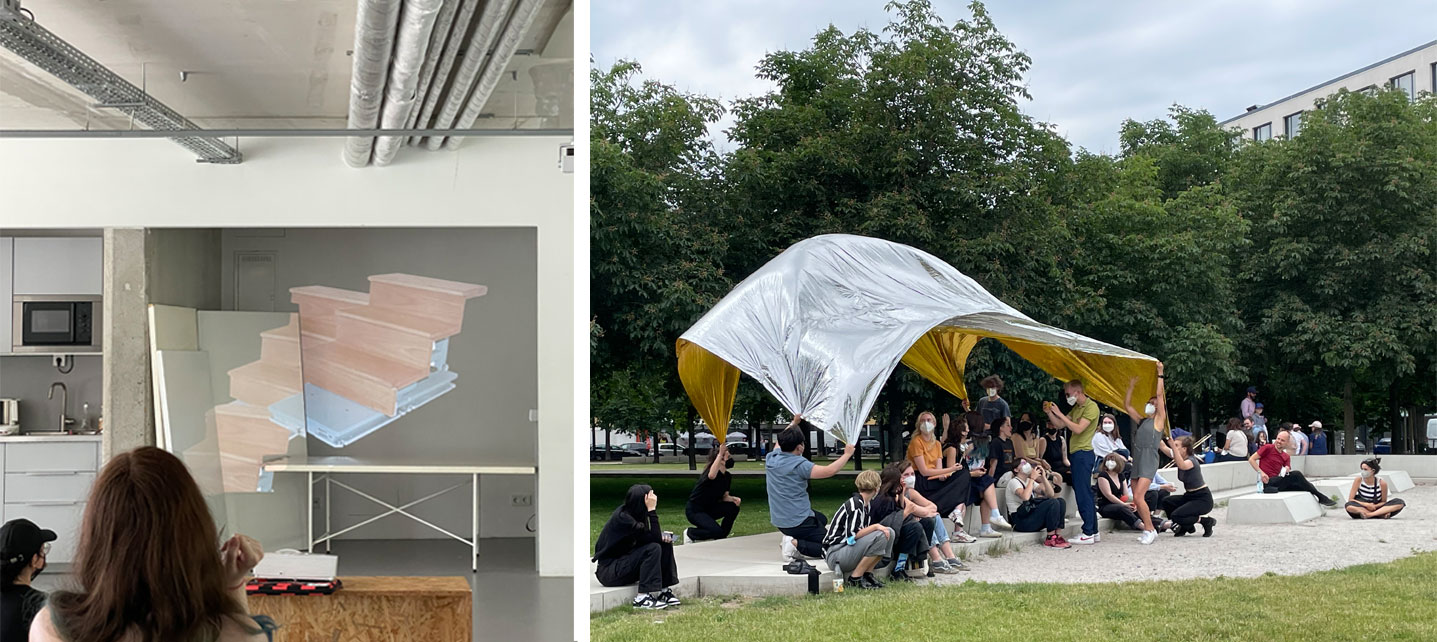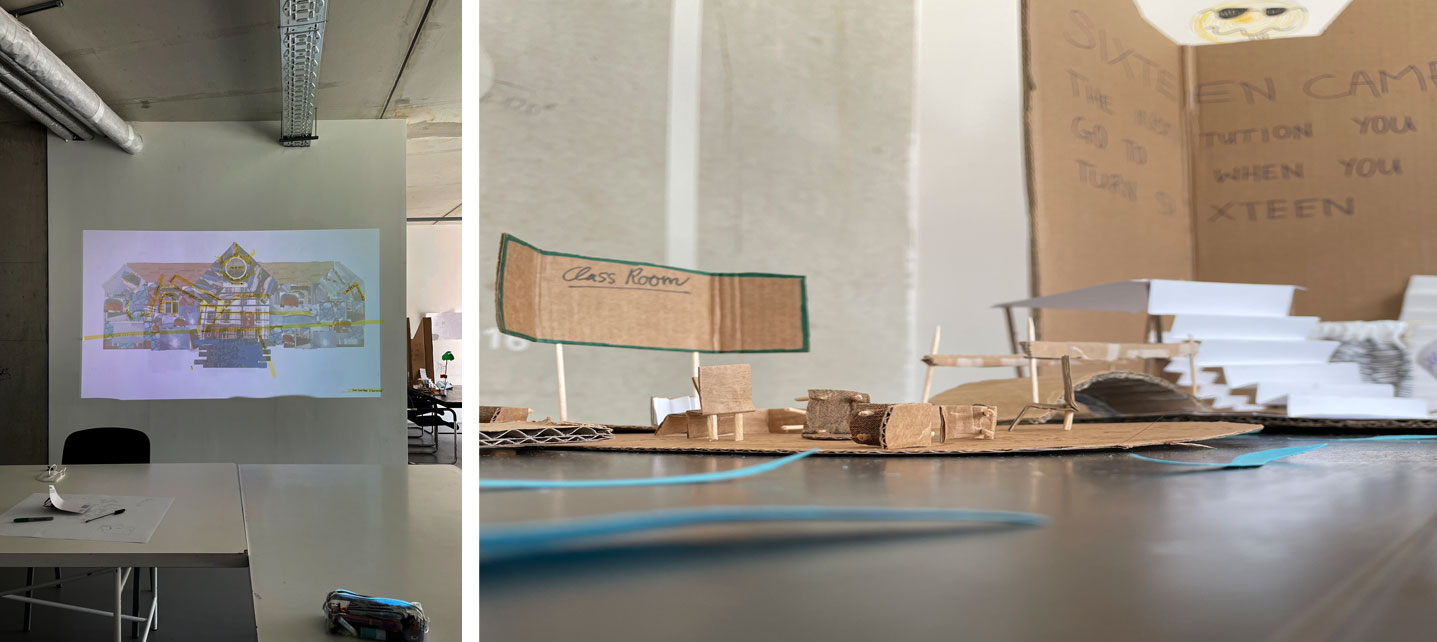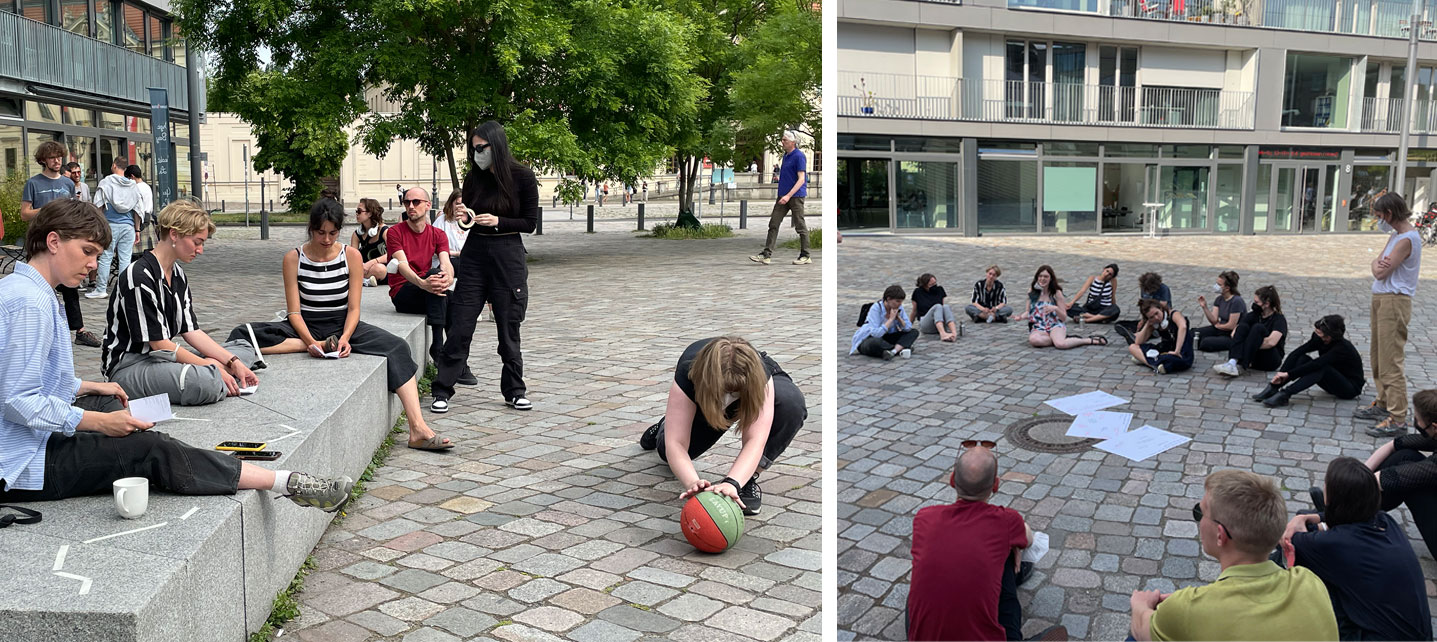Collaboration with students from Cologne and Hamburg
Questions for Learning Spaces
The SCA field teamed up with Labor für Kunst und Forschung at the University of Cologne and Hochschule für Bildende Künste, University of Fine Arts Hamburg in a 3-day-long collaboration through workshops, lectures, and art-based experiments on Questions for Learning Spaces. The collaborative process explores the current issues around the spatial organization of education, specifically with these inquiries in mind: what is the relationship between institutional and informal spaces of situated knowledge production? With which challenges, inclusion and exclusion mechanisms do they function, which design do they need? What spatial conditions enable and disable learning, and on what social negotiations are they based? What role do art and cultural practices play in this? In this context, places of education and the production of knowledge are understood in a broader sense, both as concrete and abstract places, concepts, buildings, arrangements, and narratives.
During the week, each of the three field schools met at the FeldFünf located centrally located between Kreuzberg and Mitte. Each day, the students would come together in the ongoing workshop Educational Complex and was presented to guest Lena Ziese. The group projects were a collective yet personal experience in which students co-collaborated co-culturally produced works across varying disciplines. The workshop was inspired by Mike Kelley’s “Educational Complex” in which he made a large architectural model consisting of modeling individual significant institutions that largely affected him while growing up.
Each group was tasked to create their own map or floor plan from memory of the institutions that shaped them throughout their lives. Although the exercise was not about memory, and rather about how society can be structured through education, many students reflected on the emotional experience of their past institutionalized encounters. Ziese was able to pose certain reflective questions that allowed the students to look at their floor plans retrospectively and more deeply in relation to their experience at the institution. Through active reflection and creative thinking, students then took their maps or floor plans and created a project based on them.

By making connections as a group and tracing certain themes found in their discoveries, students formulated an end product to present to the class on the last day of the collaborative Field School program. Many groups conducted a participatory element to their projects where they invited all the students to participate in their work. Each group's final project overall became an extension of the initial floor or map and reflected the memorialized emotions from institutional spaces and institutionalized experience.


